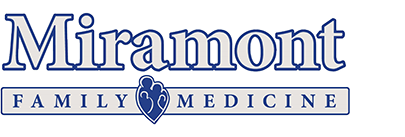
Miramont Family Medicine is a group medical practice headquartered in Fort Collins, CO, with four offices spanning the Fort Collins and Denver metropolitan areas. Operating according to a patient-centered medical home (PCMH) model with a monthly subscription fee, Miramont employs 17 healthcare providers including seven physicians, providing its patient members with access to a range of services including primary care, urgent care, diagnostics, in-house laboratory services, counseling/patient education, and minor surgical procedures.
With facilities separated by nearly 100 miles, and an emphasis on patient-centered care, Miramont’s CEO John Bender, MD, identified a need for a telemedicine solution that would provide a “better way to connect with patients and staff when I’m in one place and they’re in another.” He had utilized Skype, but found the technology unsatisfactory due to the need to arrange for someone to facilitate calls, along with the lack of mobility, depriving him of the ability to interact spontaneously, “as if I were there in person.”
Accordingly, Dr. Bender concentrated his search on robotic telepresence technologies, initially purchasing a VGo. Seeking an improvement on the VGo experience, he turned to Beam from Suitable Technologies, recognizing the telepresence system’s advantages in providing instant connections from anywhere via laptop or smartphone; eight hours of driving time; safe, dependable navigation in confined, often uneven, spaces; and needing no one on the other end to answer the call.
Miramont initially placed its Beam in a facility it operated in a remote mountain town, allowing psychologists, clinical pharmacists and nutritionists, and eventually family practice physicians, to consult remotely with patients. The practice group’s team of providers quickly adopted the robotic telepresence system, drawn by the opportunity to “be in more than one location at once.” Realizing that Beam was an “essential tool,” Miramont purchased a second system, deploying the devices in two of its offices across the Fort Collins and Denver metro areas.
In addition to Beam’s more obvious role in permitting Miramont’s providers to seek out and engage with on-site staff and patients from anywhere, the clear audio and video capabilities allow them to “securely and easily review all charting, vitals, and test results” as they communicate “face to face” in real time. These teams variously rely on Beam to provide timely assistance during after-hours emergencies, oversee administration of injections or fluids, or support colleagues with consultation for acute care services such as X-rays or kidney infection treatment. Moreover, additional third-party professionals, such as American Sign Language translators, can be used in patient care. Dr. Bender describes the results of adopting the telemedicine solution as “astounding,” stressing that it has “dramatically improved productivity, efficiency, and job satisfaction.”
Since adopting Beam, Miramont has discovered that the benefits of having a remote presence extend well beyond direct patient care. For example, Dr. Bender uses the technology to perform impromptu check-ins with dispersed employees and bring in out-of-town peers for tours of clinics. And when representatives from the DEA conducted a surprise inspection at one of the practice group’s facilities, he was able to “beam in” from an off-site location and assist them.
Utilizing Beam, Miramont’s geographically dispersed providers can regularly connect with patients who otherwise would have gone without seeing them until a later date, while also benefiting from the ability to serve more patients than before. Furthermore, the personal quality of these telepresence interactions is as essential as their frequency, since the group’s PCMH model hinges on establishing and maintaining trusting relationships between patients and providers. “Healthcare is a profession that provides a personal service, so it’s vital to me that I can establish my presence in the location where I’m needed,” Dr. Bender says, describing the immediacy of communications with Beam. “It’s amazing how quickly the technology itself fades away and you find yourself interacting with those in the room as naturally as you would otherwise.”
Beam supports Miramont in its efforts to balance care quality with efficiency, helping the staff “be more effective at [their] jobs” and simultaneously making “patients feel comfortable and secure knowing they’re getting personal service, again much more than just a voice call.” Dr. Bender summarizes Beam’s importance to the practice group’s core mission, “having telepresence technology allows me to worry less about driving from one location to another and enables me to stay focused on providing quality care.”